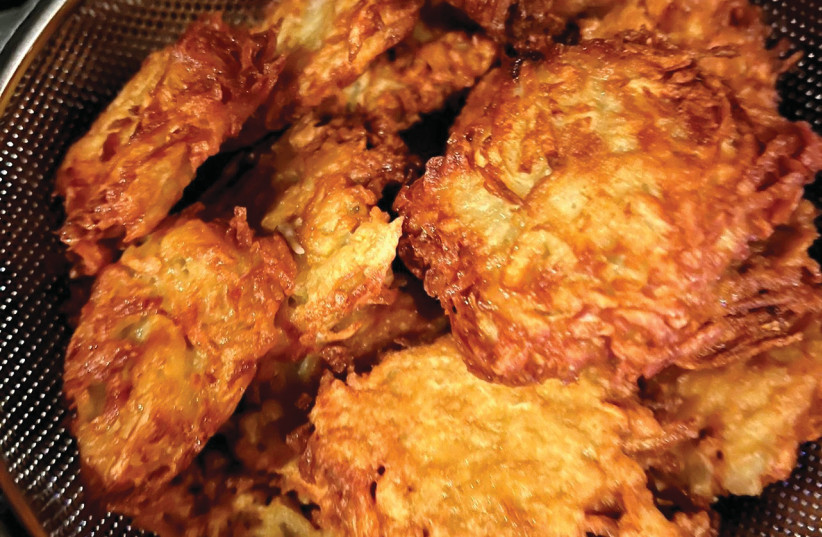Today is the last day of Hanukkah, which means that starting tomorrow, we can all go back to watching our waistlines. But let’s enjoy the Festival of Lights until the very last moment: I am bringing you two of my favorite recipes for fried latkes. The first is a classic recipe for potato latkes, and the second is for latkes made with three different vegetables.
In general, there are two methods for making latkes. One way is to make the latkes with cooked vegetables. In the second method, you use raw vegetables. For the cooked vegetable method, you cook the vegetables until they’ve softened, drain them, and then mash them up. For the raw vegetable method, you grate the raw vegetables with a grater, drain out all the liquid, then add eggs and spices.
Regardless of which method you follow, in both cases you need to pay close attention during the frying stage. You don’t want your latkes to be soggy, but you also don’t want them to burn. The ideal latkes are soft on the inside, and dark and crispy on the outside.
In short, you want to fry them just until the moment before they start to burn, so you really need to pay close attention.
For the most part, the first recipe below is the one most commonly followed by Jews who hail from Europe. Jews from Poland tend to add a pinch of sugar to the potato mixture and serve the latkes with apple sauce. Jewish communities from Russia and Lithuania, on the other hand, more often prefer making their latkes with lots of pepper and some chopped onion.

Wishing you all a wonderful Hanukkah.
POTATO LATKES
Makes 20-25 latkes.
- 1 kg. potatoes, peeled
- 3 eggs
- 3 Tbsp. flour, sifted
- Pinch of sugar
- 1 – 1 ½ tsp. salt
- Oil for frying
Grate the potatoes coarsely, then drain all the liquid using a strainer. Transfer the grated potatoes to another bowl, then let them sit for 15 minutes. Next, drain any extra liquid that has seeped out of the grated potatoes, but you can leave in the starch that has collected at the bottom of the bowl.
Add the eggs, flour, sugar, and salt, and mix well.
Heat the oil in a large frying pan. Take a spoonful of the mixture and add it to the frying pan. Gently flatten the mound using the back of a spoon. Try to keep all the latkes the same size. Fry the latkes until they’ve turned golden brown, then flip them over and brown them on the other side.
- Level of difficulty: Easy
- Time: 30 minutes
- Status: Parve
POTATO, KOHLRABI, AND ZUCCHINI LATKES
Makes 12-14 latkes.
- 1 medium kohlrabi
- 1 medium potato
- 1 large light green zucchini
- 4 cloves of garlic, crushed
- 1 egg
- 2 Tbsp. wheat or rice flour
- Salt and pepper, to taste
- ½ tsp. ground caraway seeds
- ½ tsp. thyme, finely chopped
- Oil for frying
Peel the kohlrabi, potato, and zucchini. Grate them coarsely in a large bowl. Add the garlic, egg, and flour, and mix well. Add the spices and mix again. Taste and adjust seasoning.
Take a bit of the mixture in your hand and form patties that are three or four cm. in diameter. Heat the oil in a shallow pan so that the oil is about two cm. high – similar to the amount you’d use for frying schnitzel. Add the patties, and fry them on both sides until they’ve turned golden brown. Remove and place them on paper towels. Serve hot.
- Level of difficulty: Easy
- Time: 40 minutes
- Status: Parve
Translated by Hannah Hochner.
